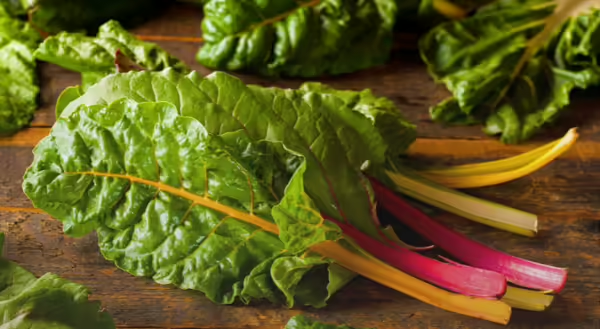
Swiss chard is the less popular green when it sits next to spinach and kale, but it deserves its shining moment, too. It has big, dark green leaves and stalks that can be white, red, or a rainbow of colors including yellow and orange. It has a slightly bitter taste, but that can be resolved with adding a little acid, like lemon juice.
Swiss chard is generally served cooked, as the leaves brighten nicely when sautéed in a bit of oil. The entire vegetable is edible, including the stem and the leaves, but the stems take longer to cook and therefore, should be sautéed separately. Consider seasoning with fresh garlic, a splash of lemon juice or red wine vinegar, black pepper and parmesan cheese. Add Swiss chard to soups, pasta or egg dishes. It can be substituted for most recipes that call for spinach or kale.
Swiss chard can also be enjoyed raw, but due to it’s bitterness, it’s best to remove the stems (save for a different recipe) and cut the leaves into ribbons or small pieces. Then, use clean hands to massage the dressing into the leaves to help tenderize. Swiss chard is an excellent source of vitamins A and K and is a good source of vitamin C and magnesium. It also includes disease-fighting antioxidants helping the argument that Swiss chard should elevate to the same level of “King Kale” status!
About the Author
Jenna Smith is a Nutrition and Wellness Educator with University of Illinois Extension, serving Livingston, McLean, and Woodford Counties. Smith uses her experience as a registered dietitian nutritionist to deliver impactful information and cutting-edge programs to Livingston, McLean, and Woodford Counties and beyond.
